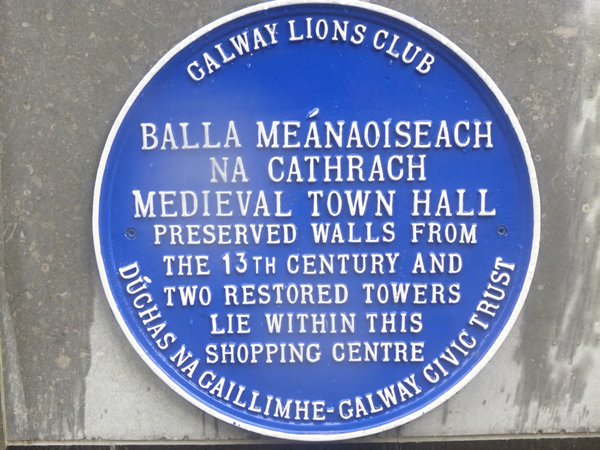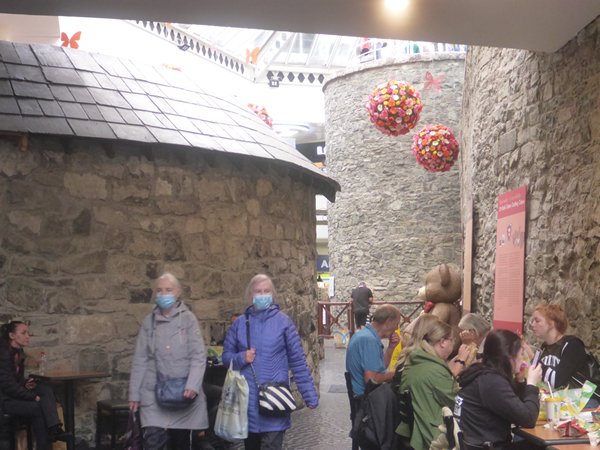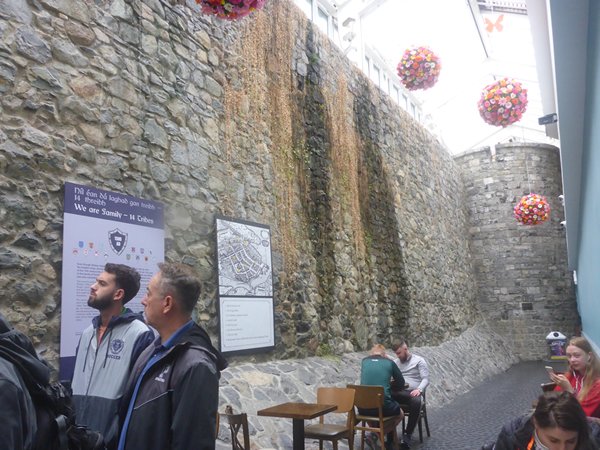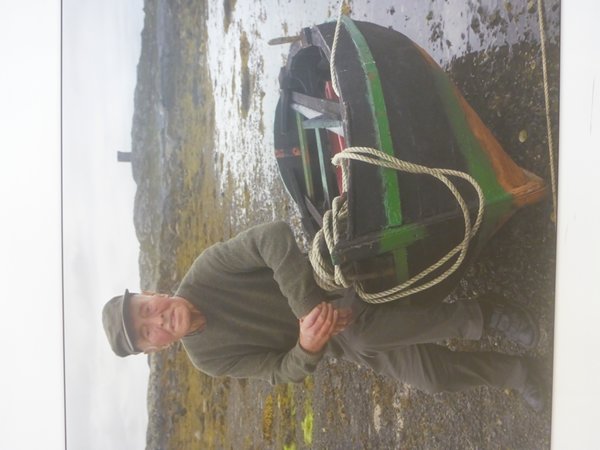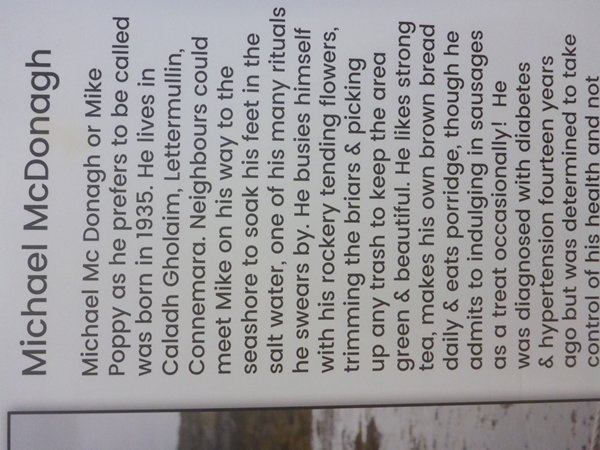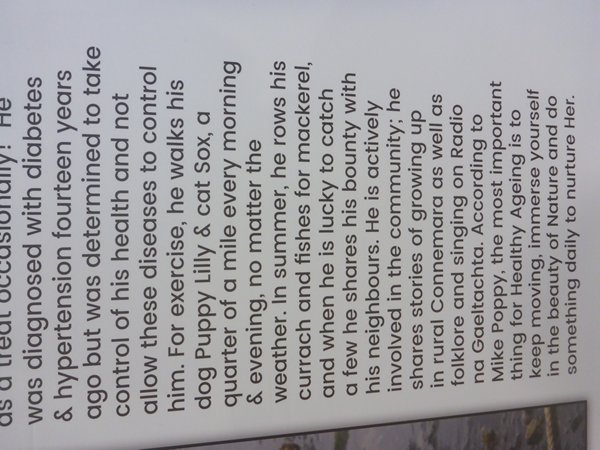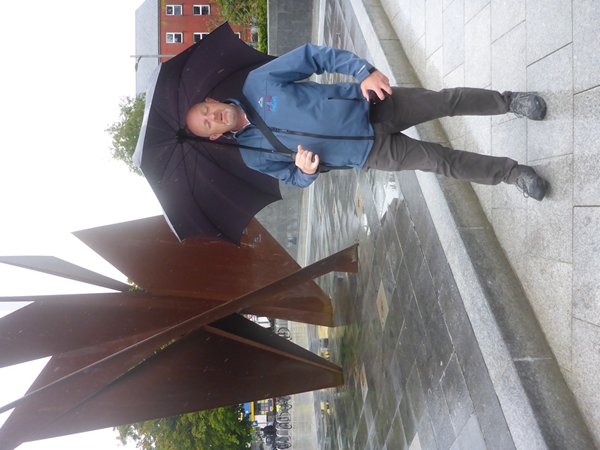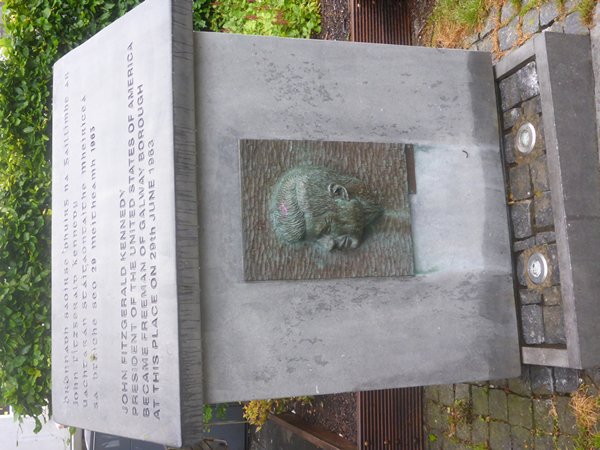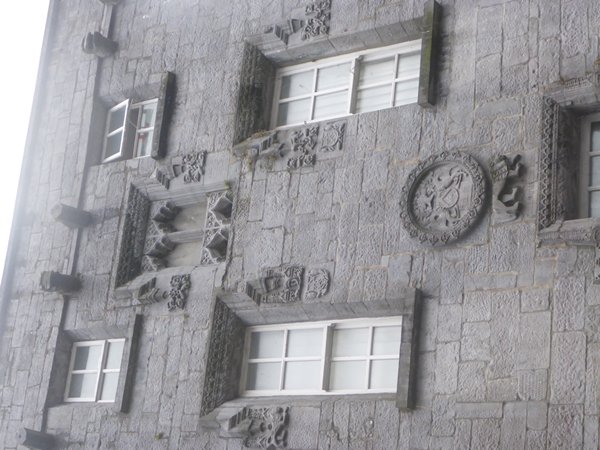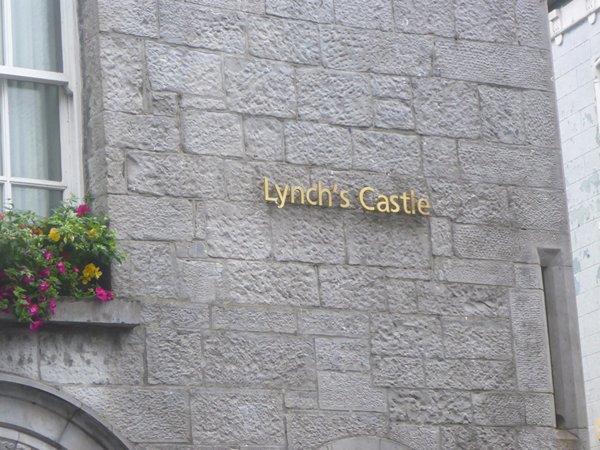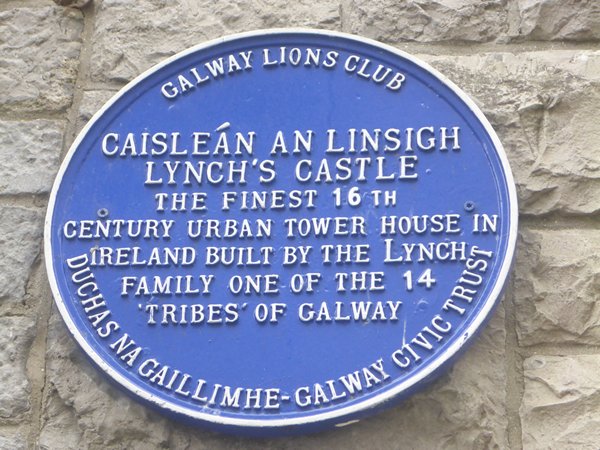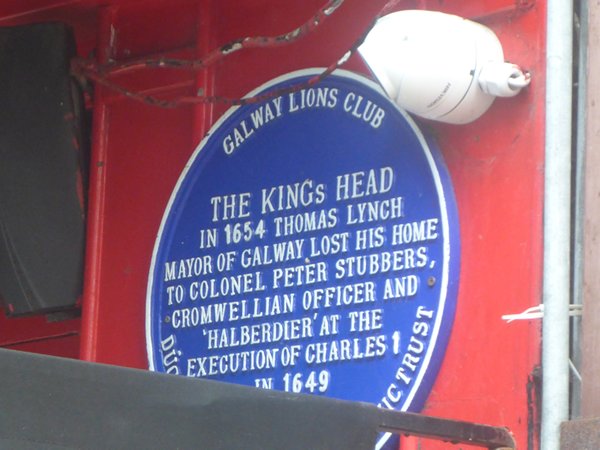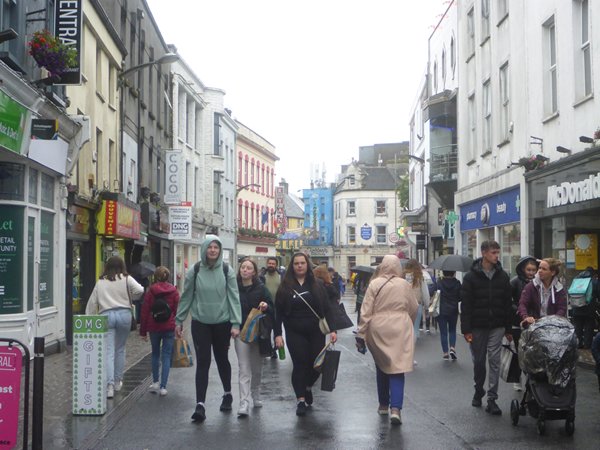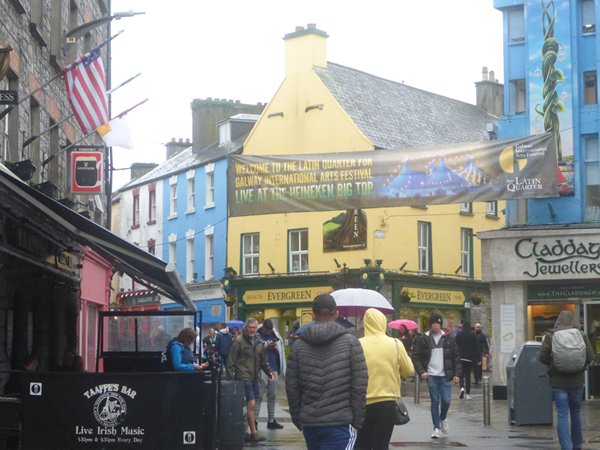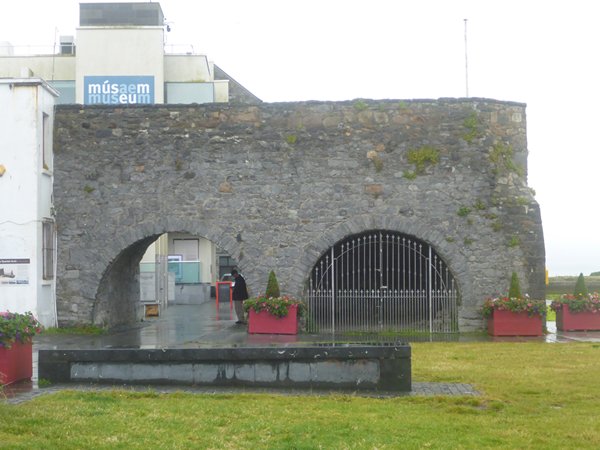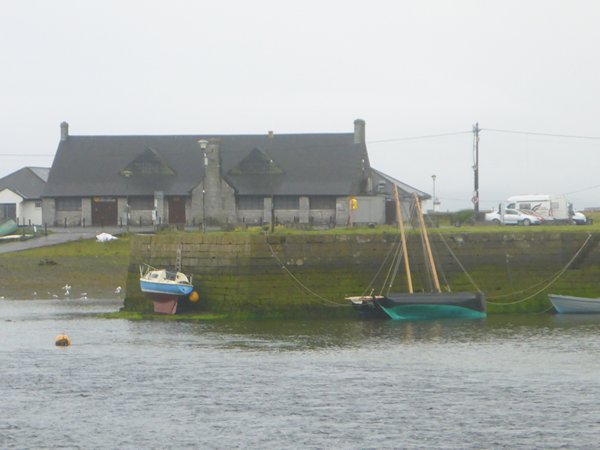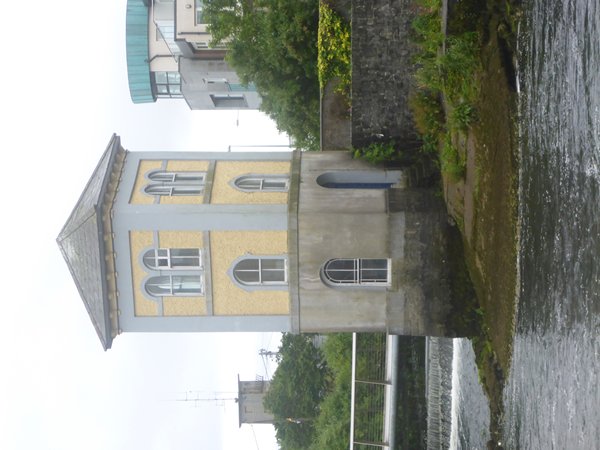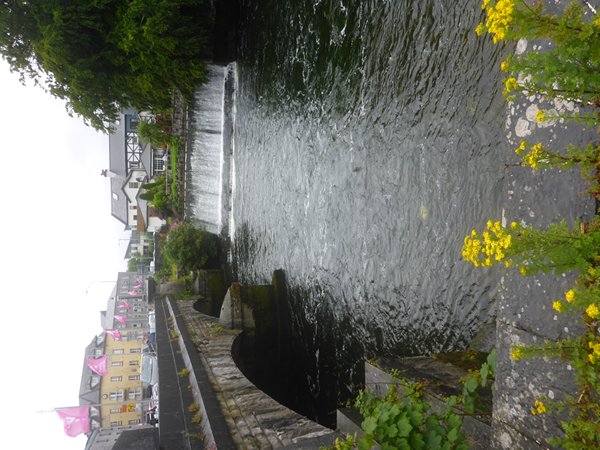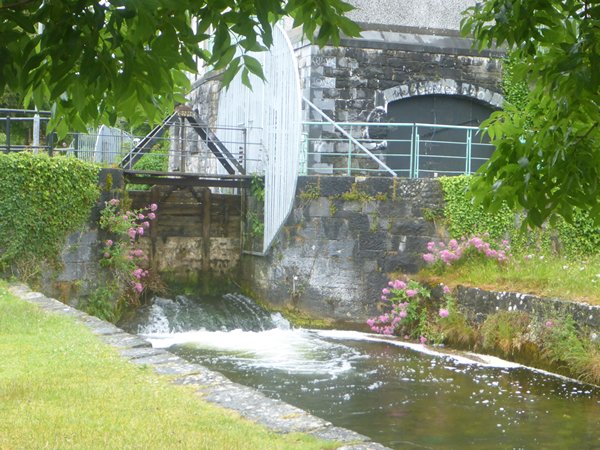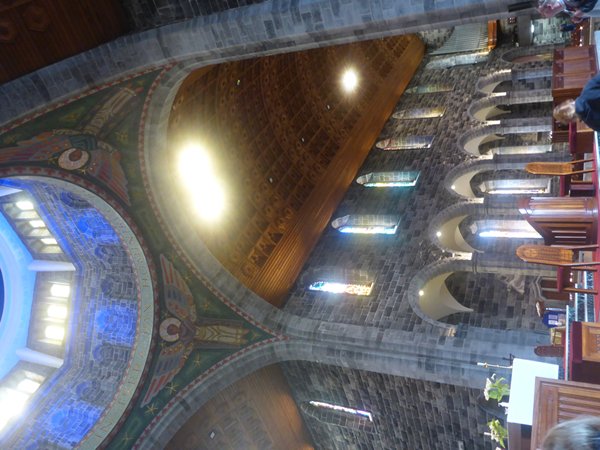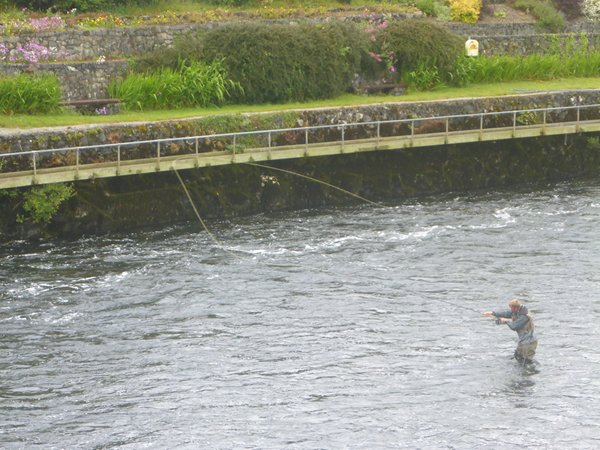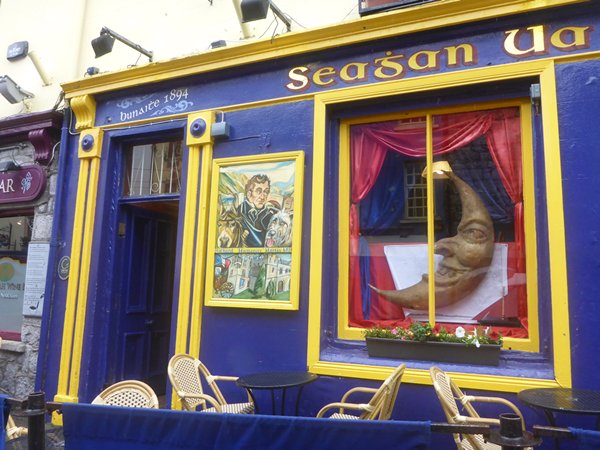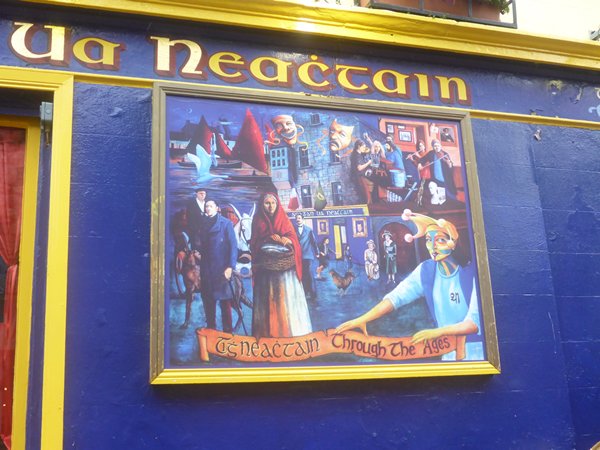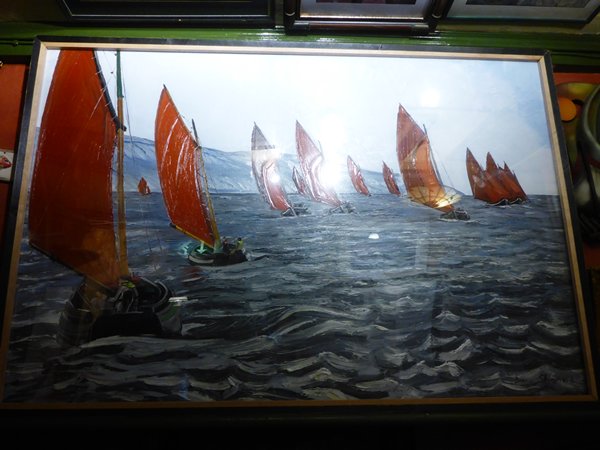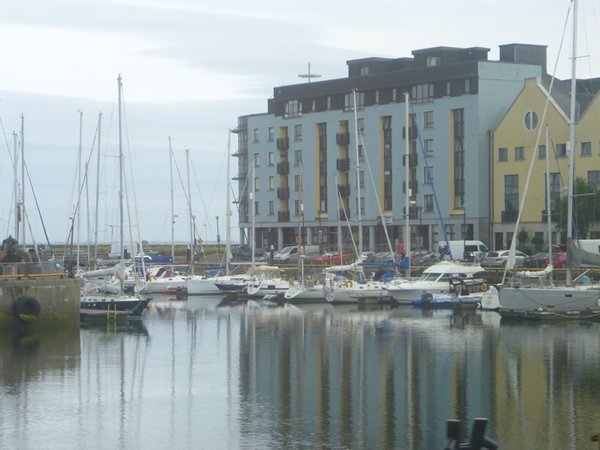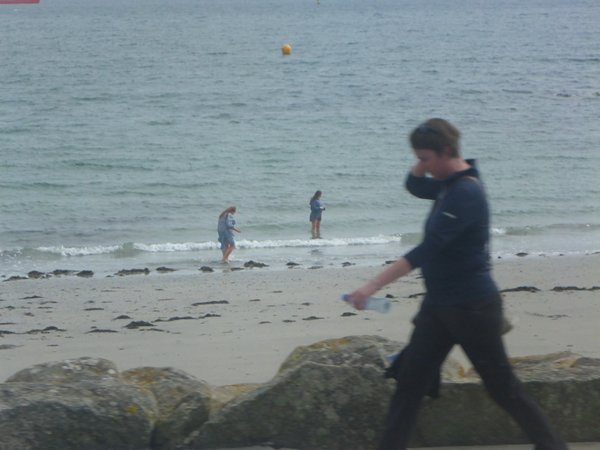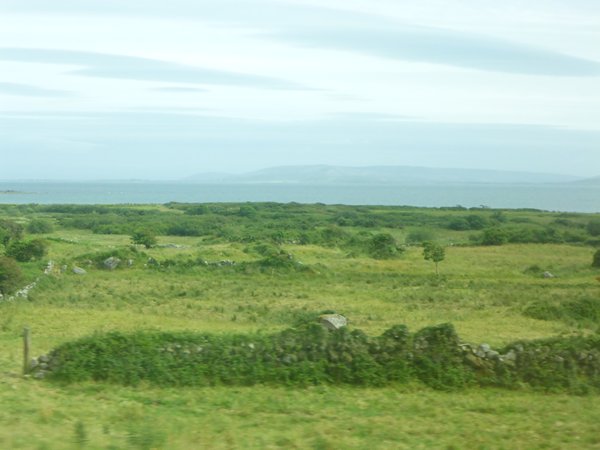Fwd: With Gerry in Galway Town

With Gerry in Galway
The stretch of south facing coast between Cashla Bay and Galway Town is virtually a straight line and the pretty shoreline is home to many people and shiny plump cattle, the former in modest neat houses and the latter in stonewalled fields of various sizes and undulations. Bathers were enjoying the healthy salt water and nearer to Galway Town is Salthill, a true Irish Riviera, very popular for holidays. Where we had moored Zoonie in the marina in Cashla Bay is the nearest possible place we could put her without locking in to the harbour in Galway itself and we thought that scenic route would be more enjoyable on the bus leaving Zoons at the seaward end of the bay ready for departure. In fact, we have covered the route five times.
I find Galway easier to recall than Limerick because of the way the history of the town and the welfare of its locals and visitors has been dealt with by the powers that be. Rob and I were early in on the bus from Rossaveal so we did a little exploring and found two restored stone towers from the 13th century Town Hall within a modern and very popular shopping mall, along with photos and accounts of some notable locals’ lives.
Gerry looked like Gene Kelly from Singing in the Rain fame peeping out from beneath his umbrella as the rain fell with determination. It was hard to hear him talking sometimes as the traffic made its loud splashing sound on the road while passing, but after his account of the statues in grassy Eyre Square we wandered down to the Latin Quarter, like the ‘Lanes’ of Brighton, full with the usual pubs, restaurants and old shops but also places that reminded me of Cadiz and was mercifully away from sloshing vehicle wheels.
Fourteen tribes ruled the roost in this deeply Irish part of Ireland, Athy, Blake, Bodkin, Browne, D’Arcy, Deane, Font, Ffrench, Joyce, Kirwan, Lynch, Martin, Morris and Skerritt, and the Lynch tribe for example were wealthy merchants and built what they thought was an ideal ‘castle’ home in the middle of Medieval Galway. From the rooftop they could see over the town and far down the Bay just as the towers in Cadiz could see beyond the rooftops out toward the same Atlantic Ocean. The tribes were from various regions including Irish, Norse, French, English and Welsh and their tumultuous hold on power just survived the devastating siege under Cromwell from 1651 until the city surrendered in 1652 and suffered a further blow when King Charles II and his successor, James II came to blows in 1691. After that their power was transferred to the protestants within the city.
We wandered on down to where the Corrib River, the fastest flowing ‘city’ river in Europe, enters Galway Bay and had a look at what is left of the pre-medieval Spanish Arches, built to house soldiers who policed the quays and thought to have been so named because of the prosperous trade with the Spanish merchant ships that lined the quay. Across the river is the Claddagh area which boasts it was in existence before Galway was built and retains its own identity. Apparently for a long period in history the mothers of new born male Martins who lived in that area named them all Richard Martin, and one of them designed the Claddagh Ring as a symbol of love, trust and loyalty.
Everywhere in the city is made attractive with an abundance of trees and flowering plants in pots and growing naturally. The centre is compact and easy to explore and so much of the past infrastructure is still in popular use, it really is an upbeat and happy place to visit.
We wandered up river past a tower at which the fishermen from the river had to pay tax on their catch and watched a couple of fishermen fly fishing. Apparently, this area is a hot spot for a bit of fly fishing and is famous the world over in those circles. We thought they were taking their life in their hands considering the pace of flow of the water. Gerry mentioned the cathedral, completed in 1965 hence the youngest in Europe, financed by local people and pretty lavish inside with lots of polished marble and oak and not far from the University. The riverside walk is pretty and we walked beside the parallel canal once useful as a source of power and in the distilling of whiskey but now more a leisure area and a quiet way of getting around the city.
Gerry was very precise in his timing and after one and a half hours, exactly, we were dismissed and found our way, after the cathedral, back to the blue and yellow painted pub in the Latin Quarter where we occupied our own little snug and were warmly looked after by the staff. We shared a veggie platter and downed some of the delicious dark stuff and soaked up the genuinely old history around us. The tan coloured sails are rigged on the famous Galway Hookers, fishing boats of the men of Claddagh and there was a green bottomed one leaning on the quay down near Claddagh. There are a few moored across the bay here in Rossaveal too. They are still popular as leisure sailing boats. I would like to be able to tell you if they are still used for fishing but their website is in Gaelic! Mr Google did tell me they were also used to carry cargo such as turf, livestock, general supplies, seaweed, poitin (once illegal moonshine, but now readily available) and lime, the rock not fruit, used in building mortar. The biggest Hooker (boat) can carry 15 tons. Festivals and regattas keep the interest in these tough and beautiful craft alive.
The boating theme continued as we started our bus journey home when I spied another Oyster 406 in Galway marina, can you spot her near vertical transom just right of centre in the picture. The weather improved and a fleet of Flying Fifteens enjoyed an evening race around the buoys in Cashla Bay. A fine end to an interesting day.
